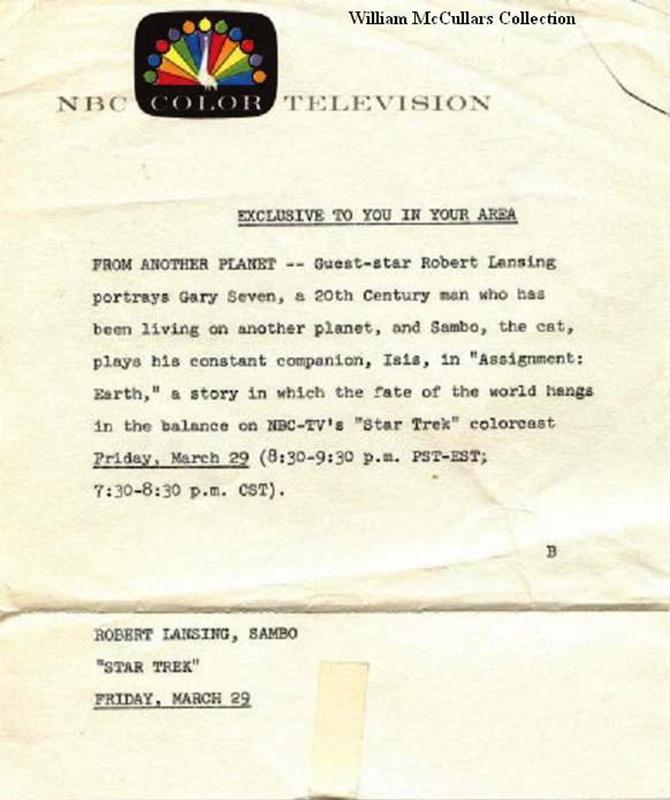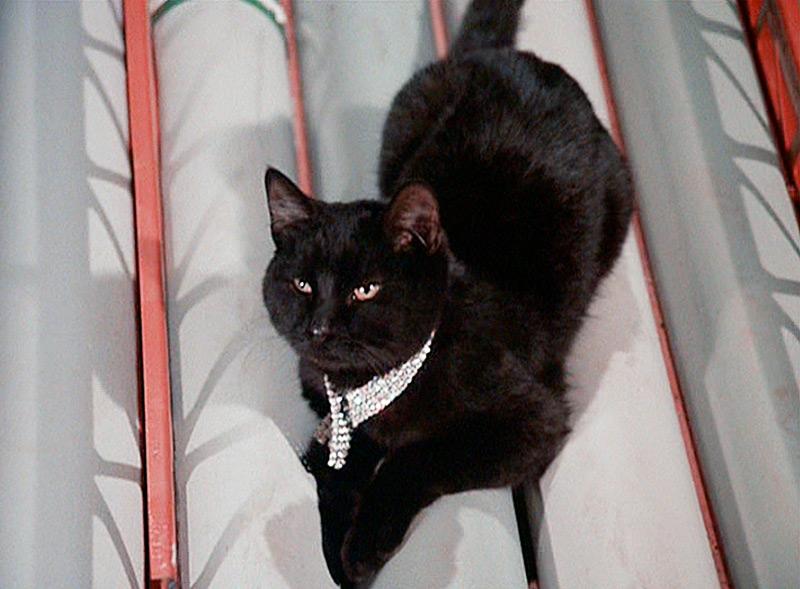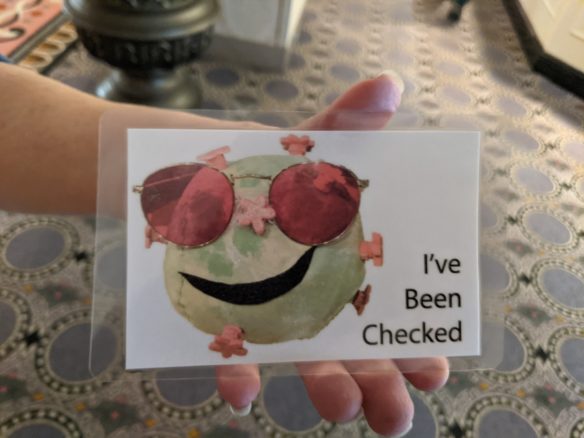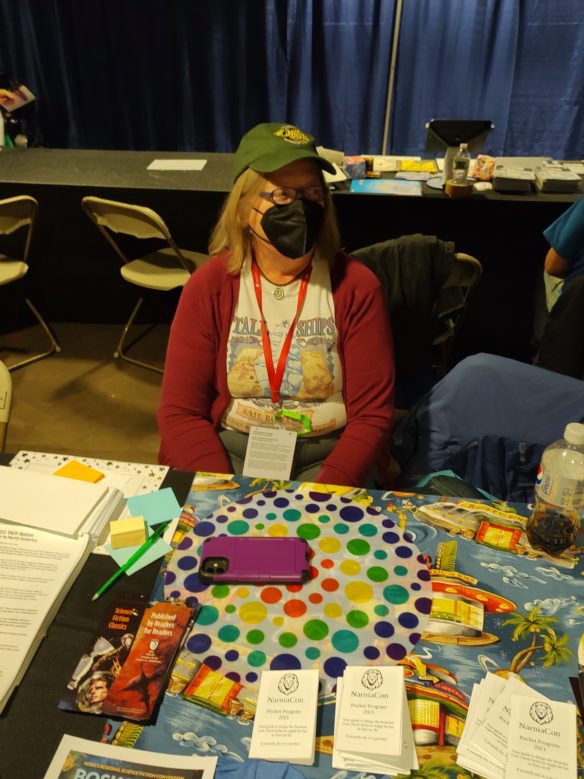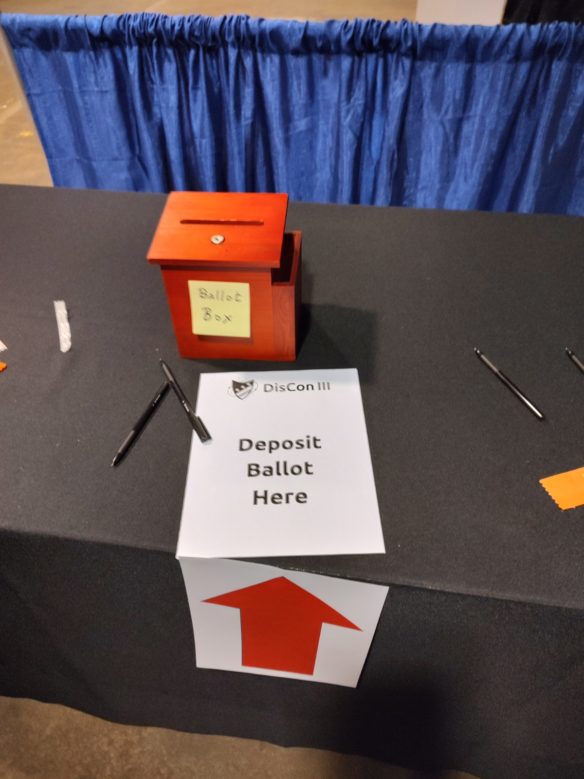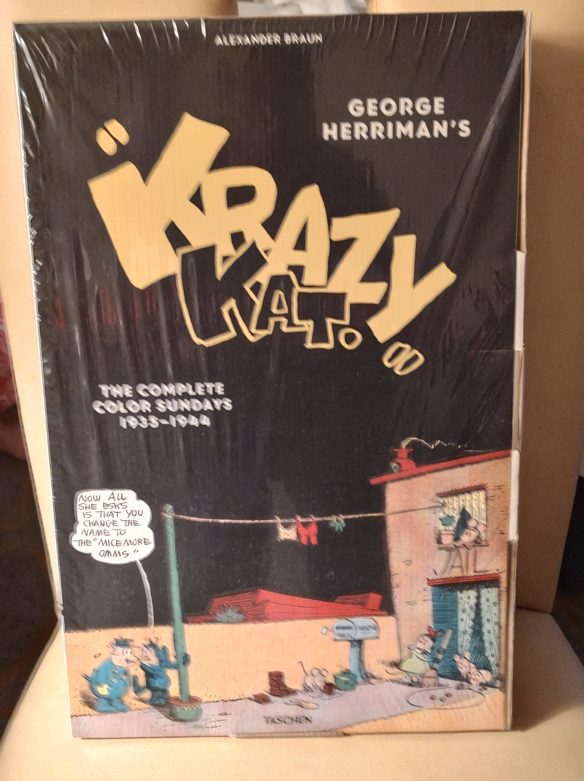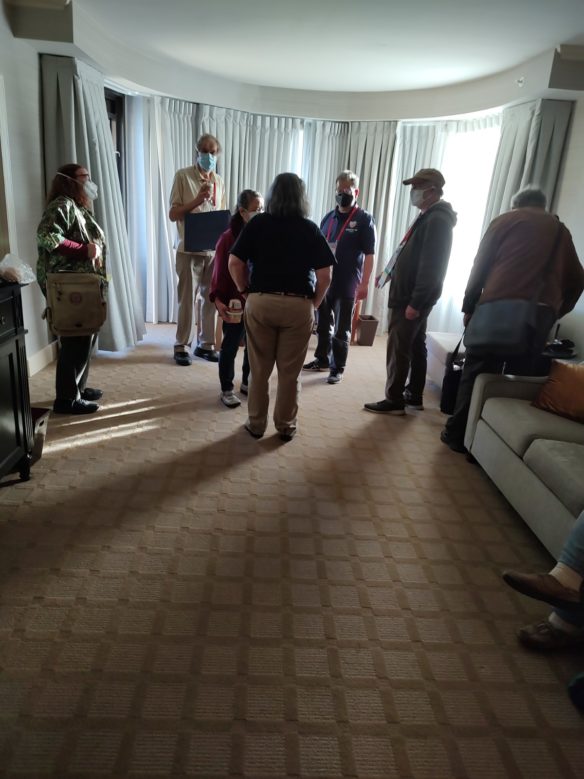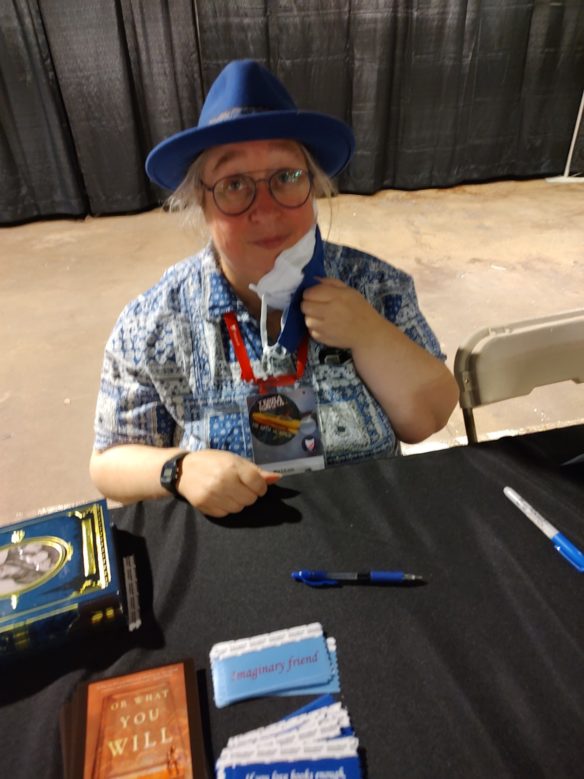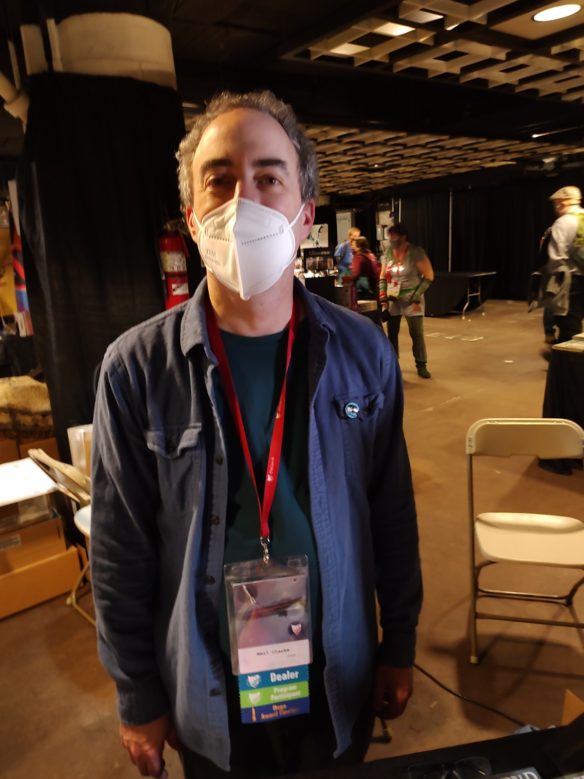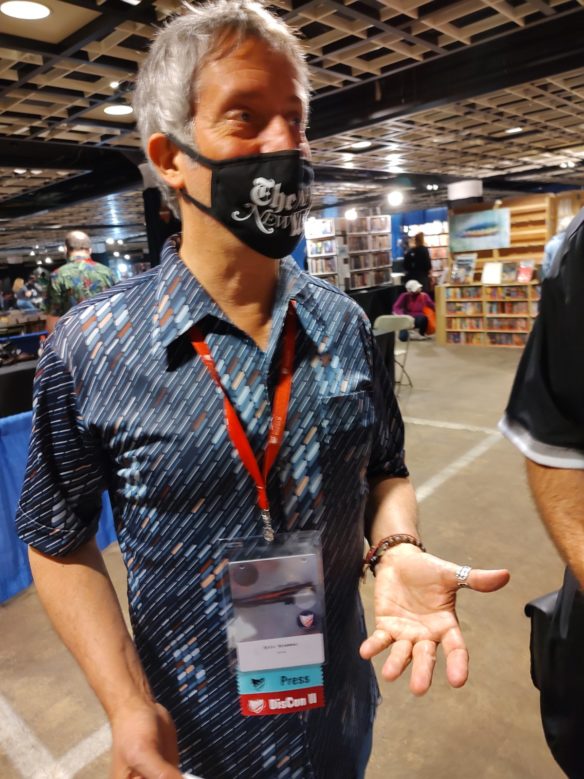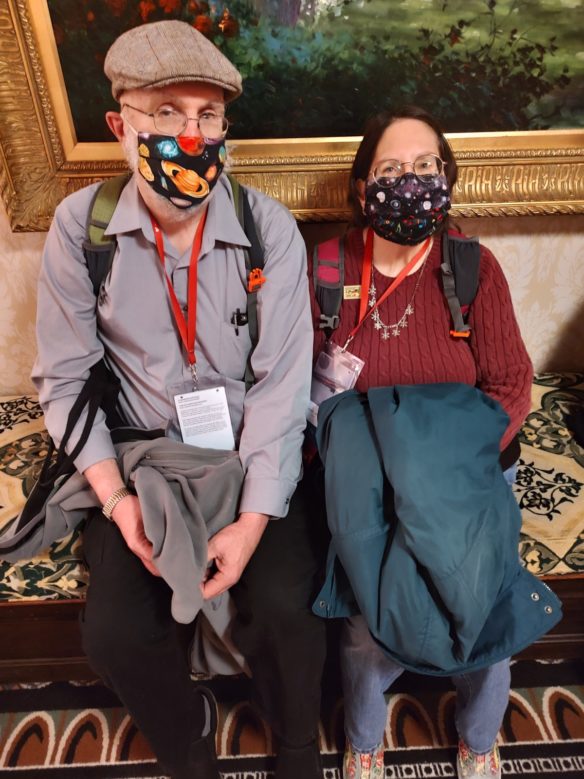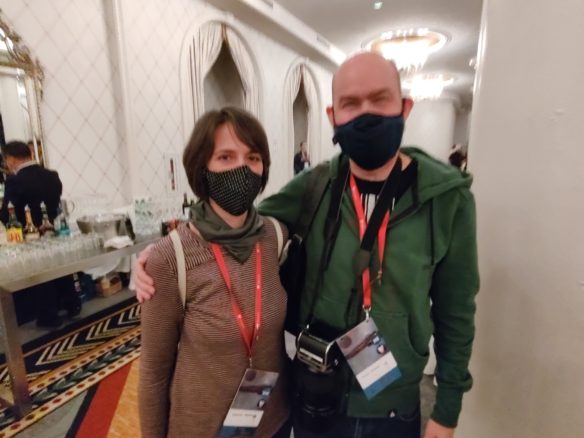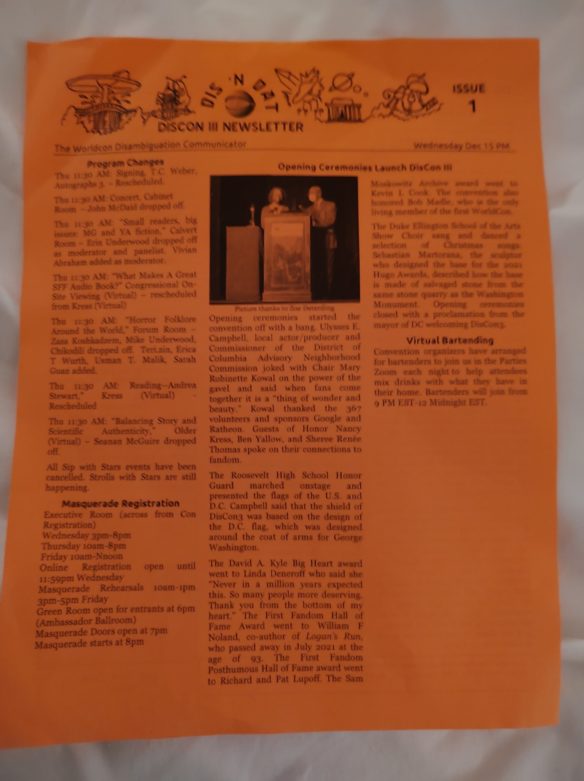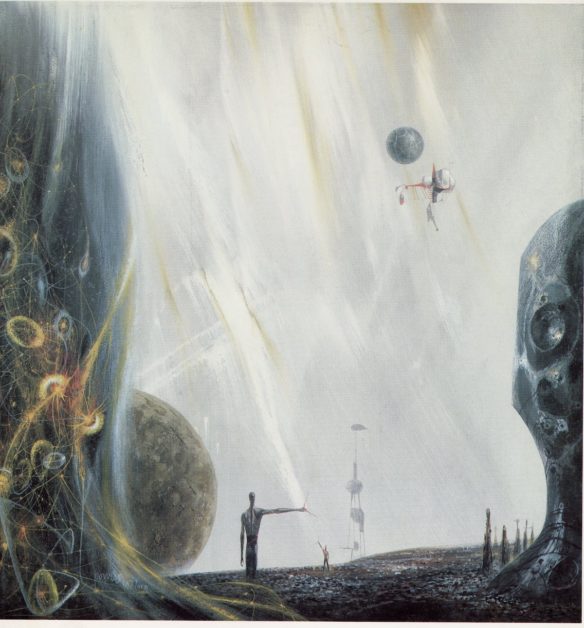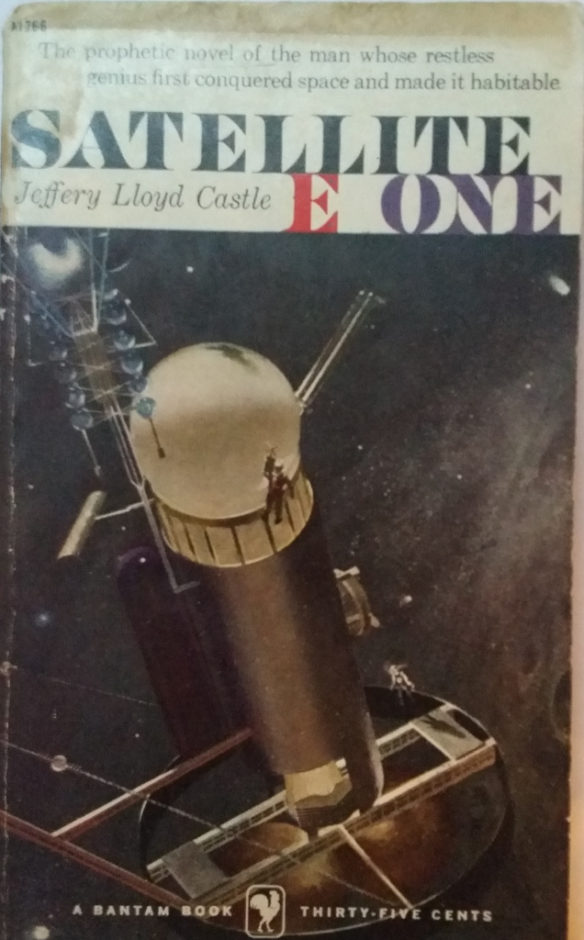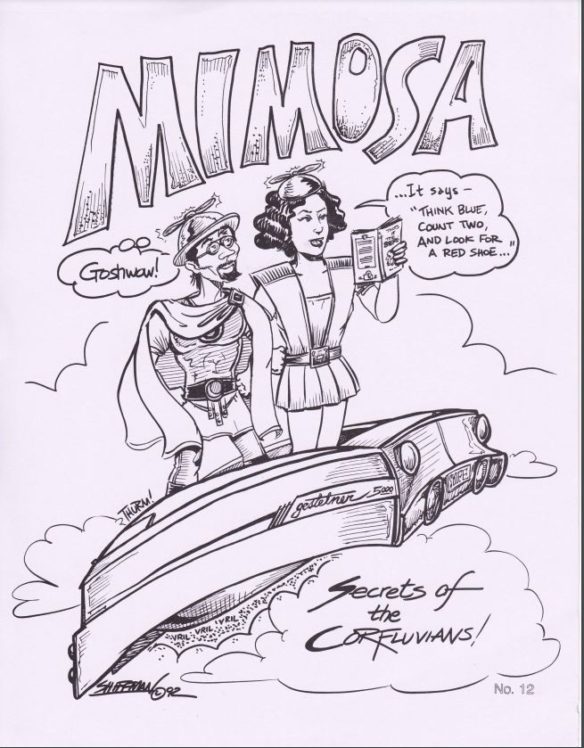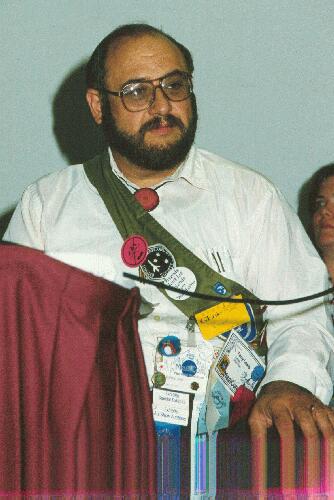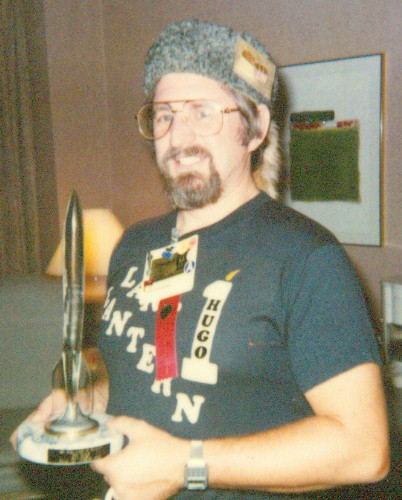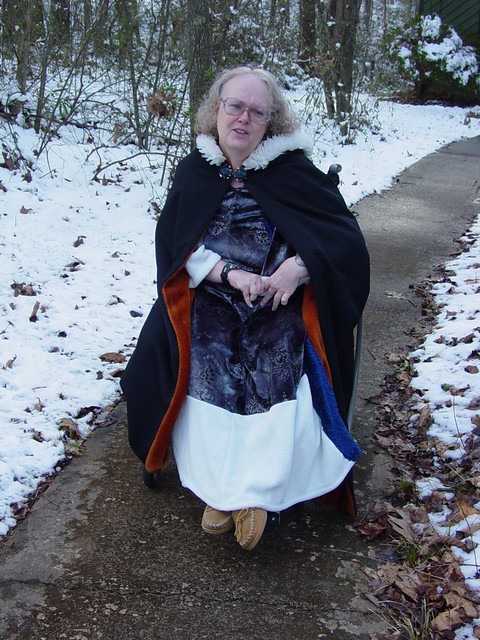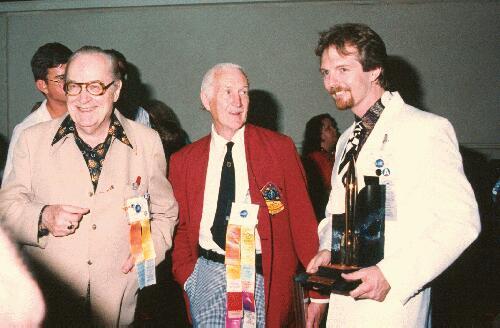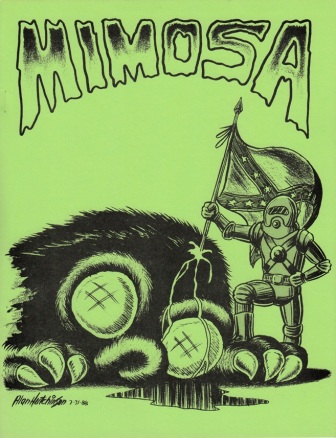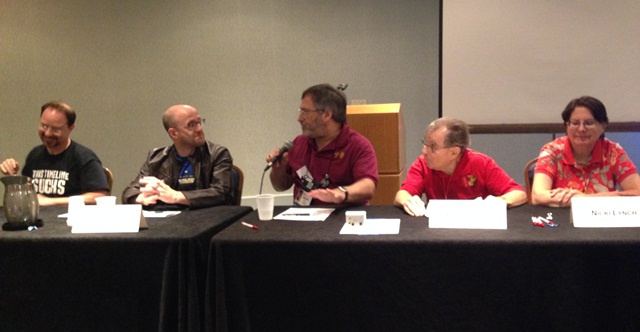By Rich Lynch: I’ve been to a lot of conventions in my personal five decades of fandom, but very few of them as small as Spiral-Con II. It was a free one-day event, sponsored by Spiral Tower Press and held Saturday, July 15, 2023 on the campus of Christopher Newport University in Newport News, Virginia. I’m kind of embarrassed to say that I don’t remember ever hearing about the first Spiral-Con, which had been held last August, even though (as I discovered belatedly) it had been a news item in File770.com. And I wouldn’t have heard about this year’s convention either if I hadn’t been contacted by someone who was scheduled to be a program participant.
That would be my friend Rusty Burke, the current President of the Robert E. Howard Foundation which was started in 2006 as a means of expanding the knowledge base about the author and his fiction. Rusty had emailed me at the beginning of July, asking if Nicki and I would like to appear on a fanzine-related panel during the convention. He was very well aware of our fanzine background – besides his status as a world-class Howard historian he is, or at least used to be, a pretty good fan artist. Way back when we all lived in eastern Tennessee he was a frequent contributor to our 1970s clubzine Chat. Turns out that two of the organizers of the convention are also Howard Foundation members, so the connection pathway from them to us was an easy one.
But enough about that. The convention drew a total of 17 people including participants but I guess that was probably about what was expected, given that the University was in the middle of summer break. Those of us who did attend witnessed an interesting single-track program that included five panels and a short awards presentation ceremony. The Trigon Awards, which according to the Spiral Tower Press website “celebrate the past, present, and future of science fiction, fantasy, and horror”, were the first thing on the schedule: the award for Scholarly Achievement went to Rusty for the breadth of his many activities within the Howard Foundation; the award for Literary Achievement went to Old Moon Quarterly, a relatively new online magazine devoted to dark fantasy and sword-and-sorcery fiction; and a Special Achievement award went to Toni Weisskopf of Baen Books who over the years has been “an unparalleled steward and champion of the pulp genres of sword and sorcery, military science fiction, and epic fantasy”.

(l-r) Jason Ray Carney and Rusty Burke
The five panels were an eclectic mix. For the first one, the topic was the literary legacy of Robert E. Howard, which started out to be an interview of Rusty by Dr. Jason Ray Carney of CNU’s English Department. But at about the halfway point the focus expanded and after that it became more about the Howard Foundation than the author. In particular, there was a lot of description about Howard Days, an annual event held in Howard’s home town of Cross Plains, Texas. Some of the convention’s program is held indoors, but other parts are held in an open air pavilion. And there are no hotels or motels in Cross Plains (the nearest ones are the better part of an hour’s drive away) so the 200-or-so people who attend are firmly committed to preserving the history and learning more about the author, and are willing to persevere through the heat of hot Texas summers to do so. Now that’s dedication!
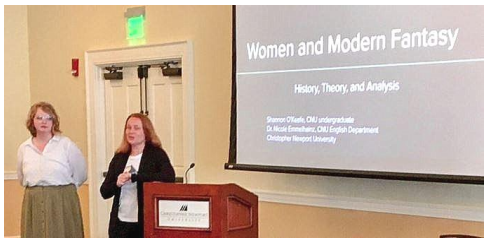
The second panel was a change of pace – a literary analysis titled “Women and Modern Fantasy: History, Theory, and Analysis”. The presenter was CNU English Department student Shannon O’Keefe, who was introduced by her advisor, Dr. Nicole Emmelhainz. By all appearances it seemed to be a preview of a thesis on the topic, and the presentation skillfully walked us attendees through the history of feminism and its literary movement, focusing on how the feminist movement eventually resulted in many women authors writing genre fiction, including science fiction & fantasy. The reasons for this, we were informed, is that genre fiction can be used as a means to comment on societal issues and can be used to create worlds, situations, and characters for making such social commentary. More to the point, genre fiction allows female authors a good way to examine and explore the ‘what ifs’ of feminist political and social movements, including things like cultural expectations for women. There were several writers cited as examples, and the latter part of the panel turned out to be an in-depth analysis of a major work by one of them: R.F. Kuang’s The Poppy War. It’s ostensibly a dark fantasy with military overtones, but it’s also a journey of discovery and awakening for its main character, Rin. I haven’t read it yet, but after this I think I’m intrigued enough that I’ll want to.

There was another change in direction after that – the third panel was about the history of pulp magazines. Dr. Carney was again the moderator and the panelists were two experts with encyclopedic knowledge on the topic: historians Nathan Vernon and Josh LeHuray. Vernon is also a board member of The Pulp Magazine Project, which according to its website is “an open-access archive and digital research initiative for the study and preservation of one of the twentieth century’s most influential print culture forms: the all-fiction pulpwood magazine.” Similar to the Howard panel earlier in the day, this one started out by walking us through the history of the pulp magazine era (which dates all the way back to 1896 when Frank A. Munsey published the first issue of Argosy) but eventually broadened to include discussion and description of PulpFest, the annual convention which celebrates the history of that type of publication. Overall it was an opportunity to broaden my knowledge – I hadn’t known, for example, that during the pre-WWII years newsstands rented out space to the pulp publishers rather than entering into consignment or outright purchase agreements for the magazines. There were many well-known authors who wrote for pulp-era magazines including now-famous science fiction and fantasy writers such as Isaac Asimov, Poul Anderson, Murray Leinster, Edgar Rice Burroughs, Edmund Hamilton, C.L. Moore, and, yes, Robert E. Howard (to name just a few). Ray Bradbury also was published in pulp-era magazines, which segues nicely into the description of the next panel.
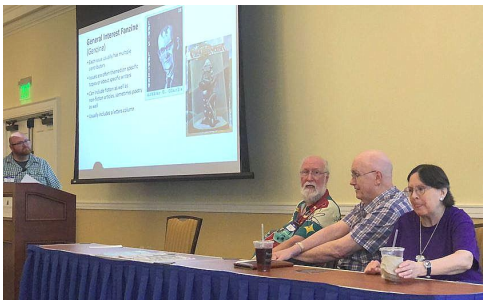
The fourth panel was the one Nicki and I had come to Spiral-Con for. It was titled “A Brief History of Zine Culture and its influence on Genre Fiction”, but for the purpose of this panel the focus was limited to science fiction fanzines. The moderator, Dr. Luke Dodd from Eastern Kentucky University (another Howard Foundation member), had informed me prior to the convention that a visual aid or two for the panel would be helpful so I’d created a PowerPoint which provided a few prominent examples of science fiction writers who had edited and published fanzines. One of them was Bradbury who in 1939-40 had published four issues of Futuria Fantasia, which was an eclectic mix of essays, fiction and poetry. The second issue contained a short story by Bradbury that probably became the basis for his first professional sale as a writer.
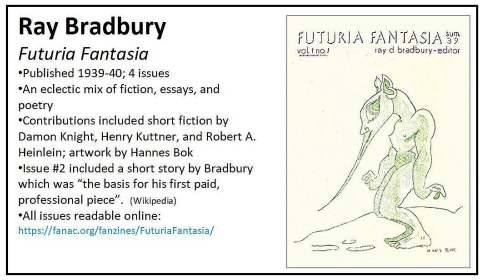
What I had attempted to show was that zine culture of the 1930s through the end of the 1960s was a prime conduit for science fiction fans to become science fiction authors. But after that, there was pretty much a paradigm shift – new writers in the field had found other routes (such as writers workshops) to become professionals. There didn’t seem to be many people in attendance who were very knowledgeable about science fiction fanzines, so Nicki, Rusty, and I described in general some of the different types (genzine, perzine, apas, etc.). And after that there were questions from audience members which indicated a genuine interest in learning more about fanzines and fanzine fandom. I hope they will follow up on it by visiting the two online sites where fanzines are archived – there’s much for them to discover.

The final panel of the convention had been mislabeled in the program handout – it had been described as “The Literary Legacy of Space Opera: Literature, Film, and Gaming” but the actual focus was on military science fiction. The moderator was Baen Books assistant editor Sean Korsgaard (who earlier had accepted Toni Weisskopf’s Trigon Award), and the two panelists were Chase Folmar and Dr. John Balderi. Korsgaard and Balderi are retired U.S. military, and they all had strong opinions about the topic. The panel was actually fairly wide-ranging, including call-outs to some of the more prominent military SF writers such as David Drake and David Weber, but what made it interesting to me was the back-and-forth with audience members which attempted to define just what qualified as military science fiction and what didn’t. The Expanse, for example, has a lot of military SF overtones but the overall plot of the series is much more about discovery and survival on a grandiose scale – in other words, it’s space opera. And there are some series which are, in fact, military science fiction even though the plots are not really pro-war – John Scalzi’s Old Man’s War is a good example of that. And there are other stories which have a militaristic basis or foundation but are not, strictly speaking, military science fiction – Keith Laumer’s original ‘Bolo’ story, “Night of the Trolls”, is a prime example of that. There were a lot of questions from the audience, and it made for one of the more interesting panels I’ve attended lately.
I’m glad I attended Spiral-Con. The day was filled with good panels that showcased many of the diverse interest areas of science fiction and fantasy – it had made the traffic jam-filled drive down from Maryland and expenditure of Marriott points worthwhile. But I think the organizers need to figure out what they want the future of the convention to be – there’d been just enough publicity (via the Spiral Tower Press blog) to bring 17 people to the event, which seems barely enough to make it sustainable. But the meeting site at CNU probably couldn’t handle very many more than that – if the convention had been held when classes were in session there would have been way too many attendees for the meeting room to handle. I’ll be interested to see what direction they go with this. And I’ll also be more on the lookout, next year, for information about the convention!
Update 07/21/2023: Revised after the original posting based on information provided by commenters.


